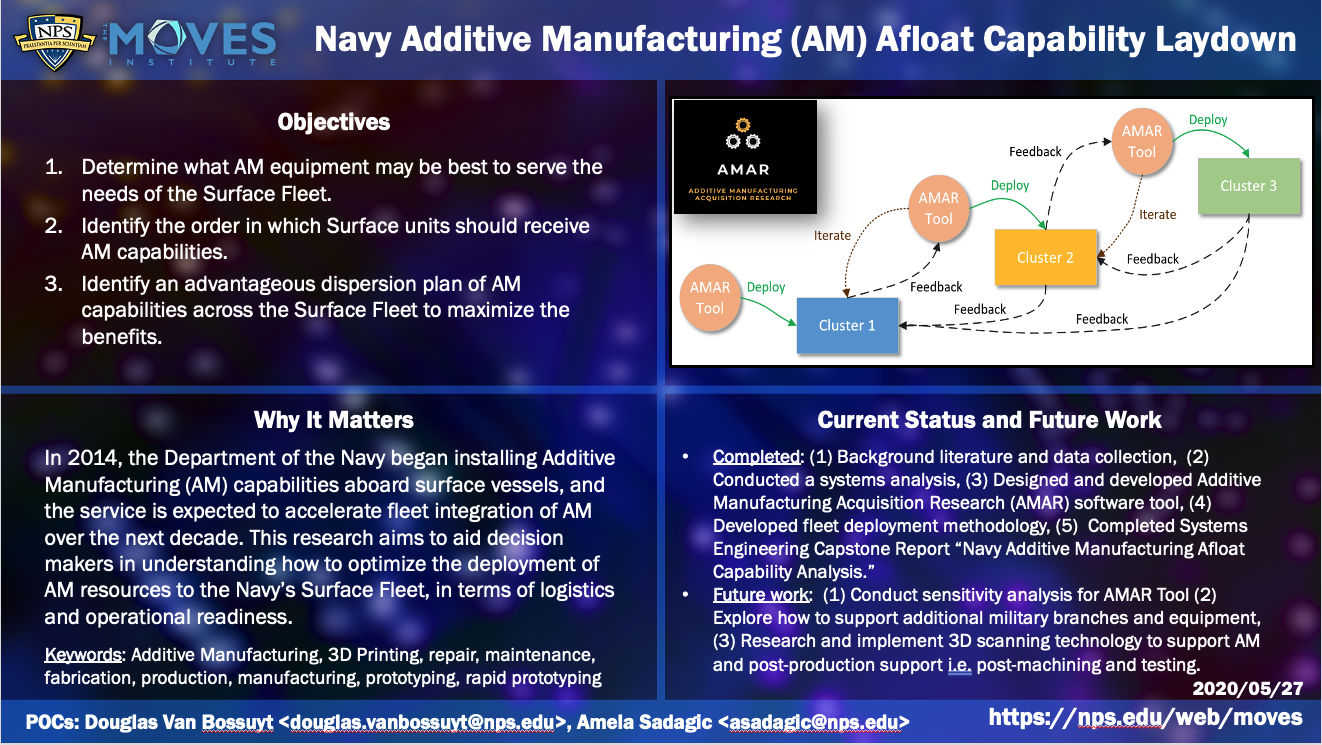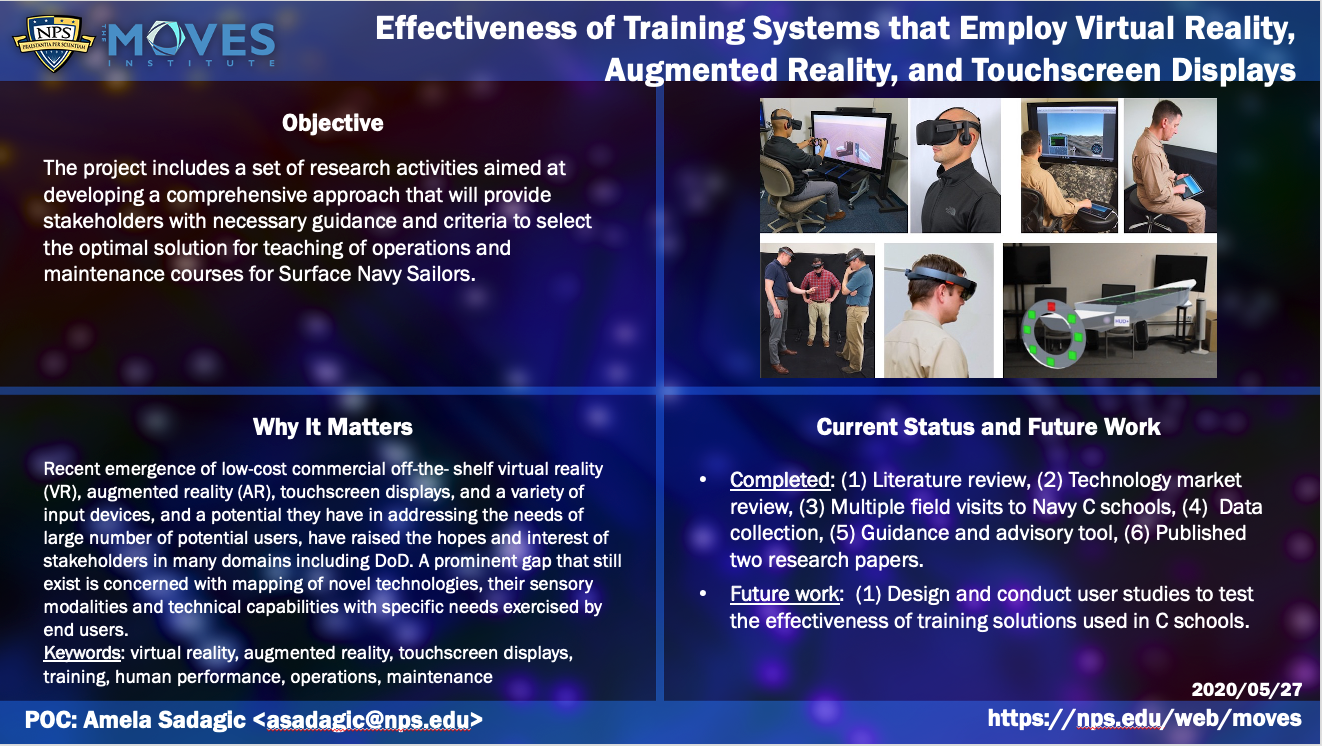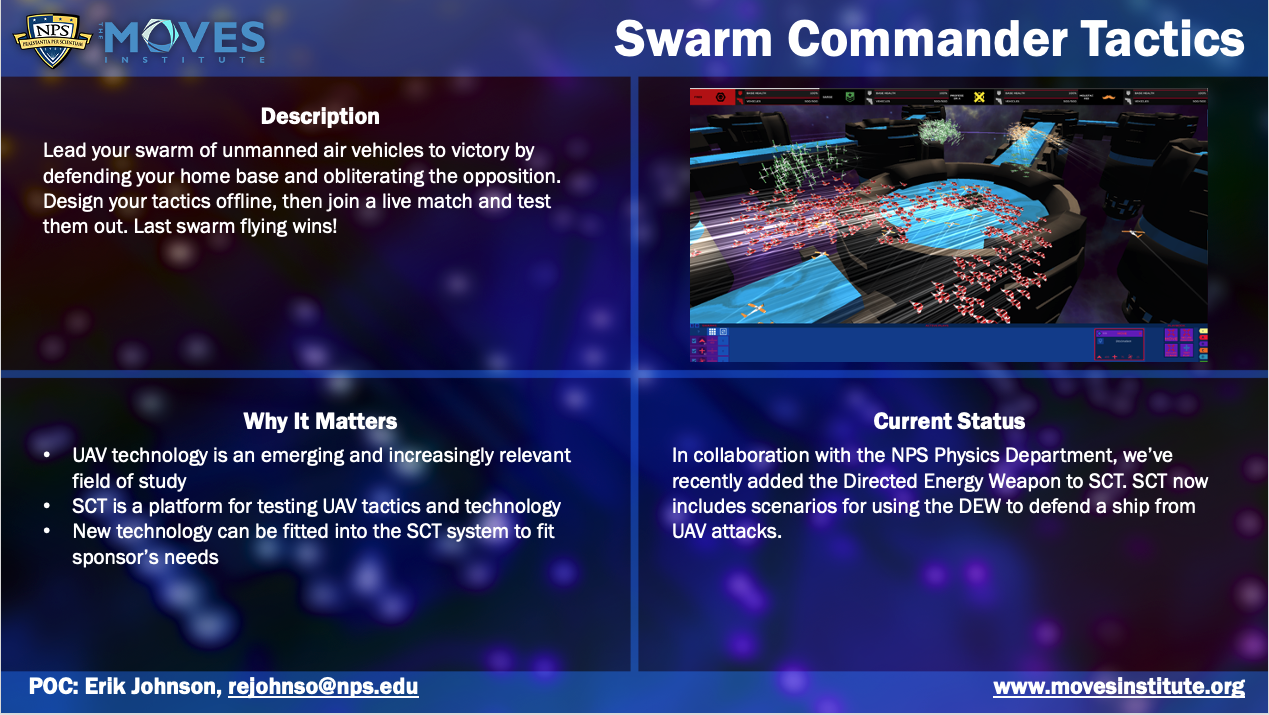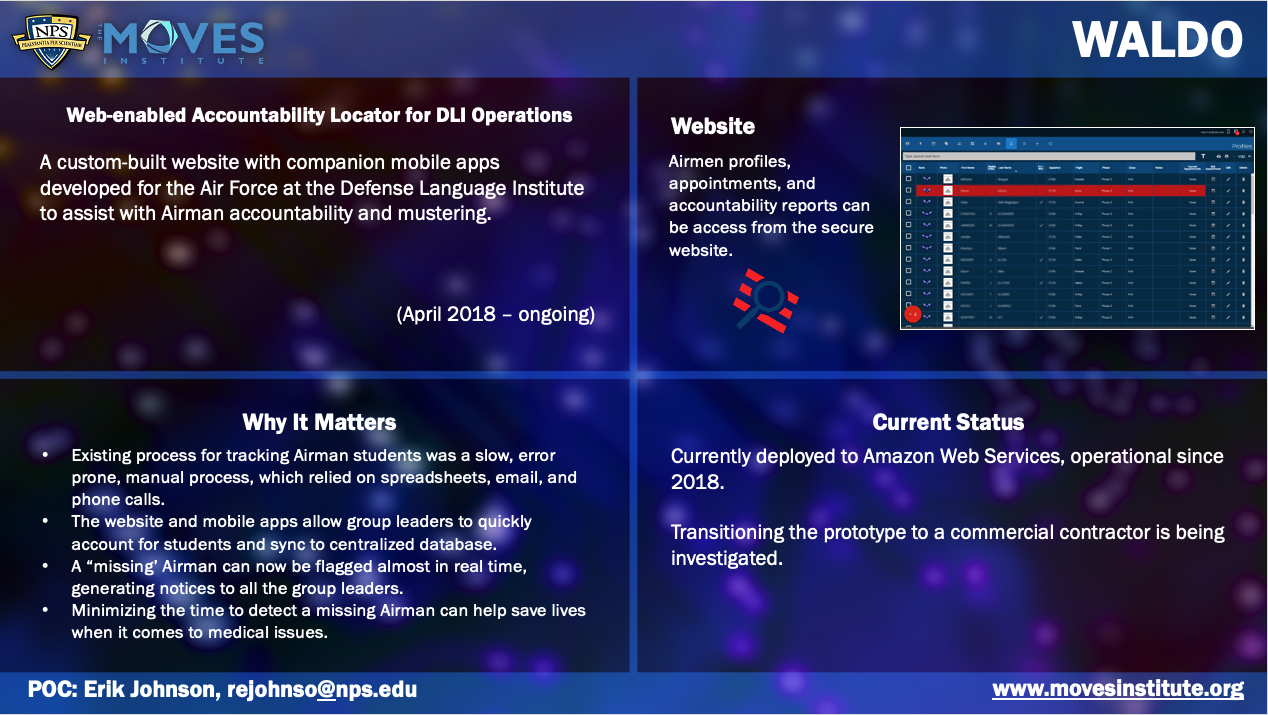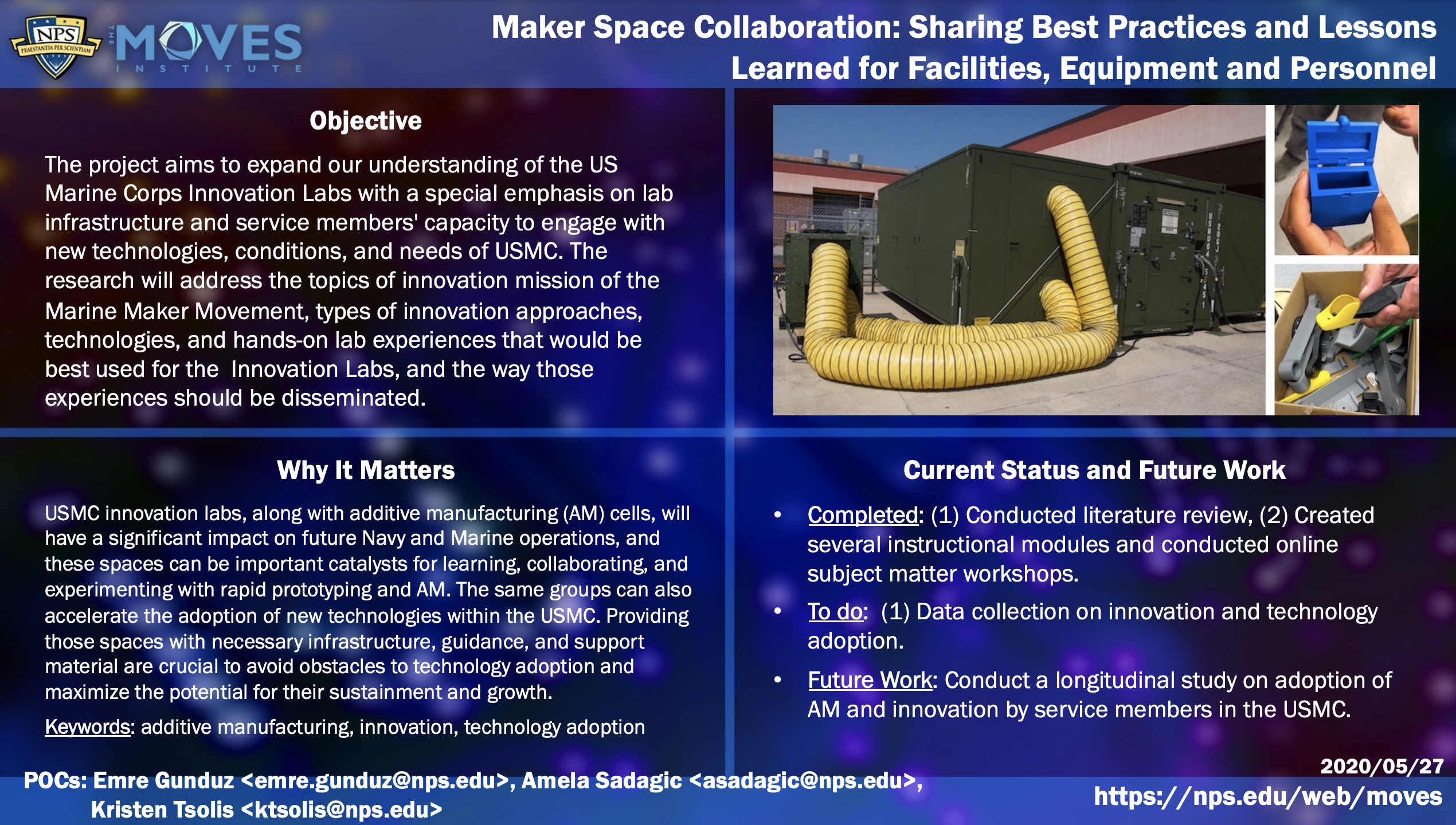Projects - MOVES Institute
USMC innovation labs, along with additive manufacturing (AM) cells, will have a significant impact on future Navy and Marine operations, and these spaces can be important catalysts for learning, collaborating, and experimenting with rapid prototyping and AM. The same groups can also accelerate the adoption of new technologies within the USMC. Providing those spaces with necessary infrastructure, guidance, and support material are crucial to avoid obstacles to technology adoption and maximize the potential for their sustainment and growth. This project expanded our understanding of the US Marine Corps Innovation Labs with a special emphasis on lab infrastructure and service members' capacity to engage with new technologies, conditions, and needs of USMC. The research addressed the topics of innovation mission of the Marine Maker Movement, types of innovation approaches, technologies, and hands-on lab experiences that would be best used for the Innovation Labs, and the way those experiences should be disseminated.
PI: Emre Gunduz, Co-PIs: Amela Sadagic and Kristen Tsolis
Time: Apr-Sep 2020
Sponsor: SECNAV & Naval Research Program
Topic Sponsor: USMC Systems Command, Quantico, VA
Navy Additive Manufacturing (AM) Afloat Capability Laydown
In 2014, the Department of the Navy began installing Additive Manufacturing (AM) capabilities aboard surface vessels, and the service is expected to accelerate fleet integration of AM over the next decade. This research aimed to help decision-makers understand how to optimize the deployment of AM resources to the Navy’s Surface Fleet in terms of logistics and operational readiness. Objectives of our project included determining what AM equipment may be best to serve the needs of the Surface Fleet, identifying the order in which Surface units should receive AM capabilities, and identifying an advantageous dispersion plan of AM capabilities across the Surface Fleet to maximize the benefits.
PI: Douglas Van Bossuyt, Co-PI: Amela Sadagic
Time: Oct 2019 - Oct 2020
Sponsor: SECNAV & Naval Research Program
Topic Sponsor: N45
Student capstone project: Nathan Banks, Daniel Ferreira, Jerome Mccauley, Joseph Trinh, and Kenneth Zust: "Navy Additive Manufacturing Afloat Capability Analysis”, https://calhoun.nps.edu/handle/10945/64681
Award: NPS Oustanding Theses, Nathan Banks received Meyer Award for his academic performance
